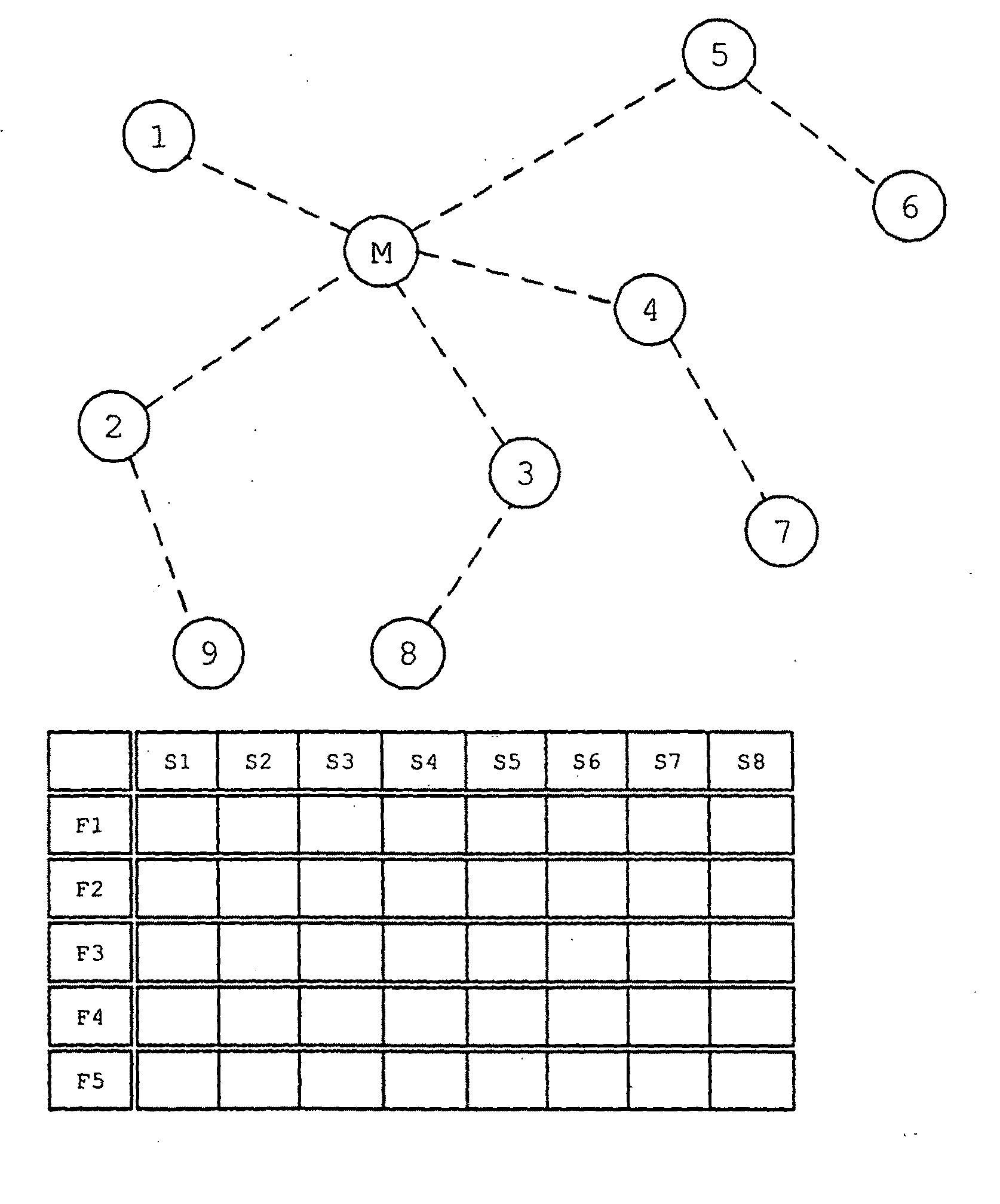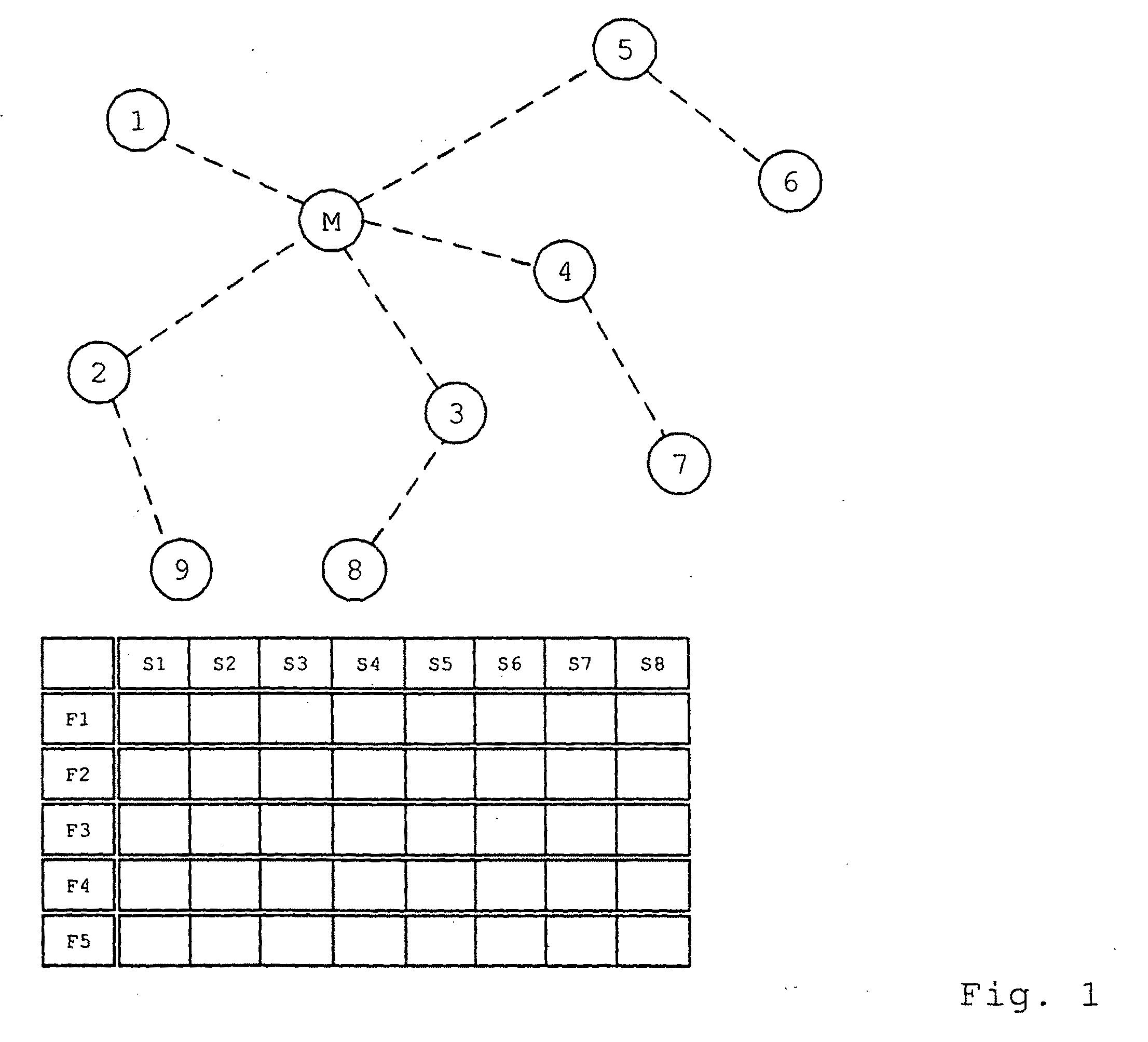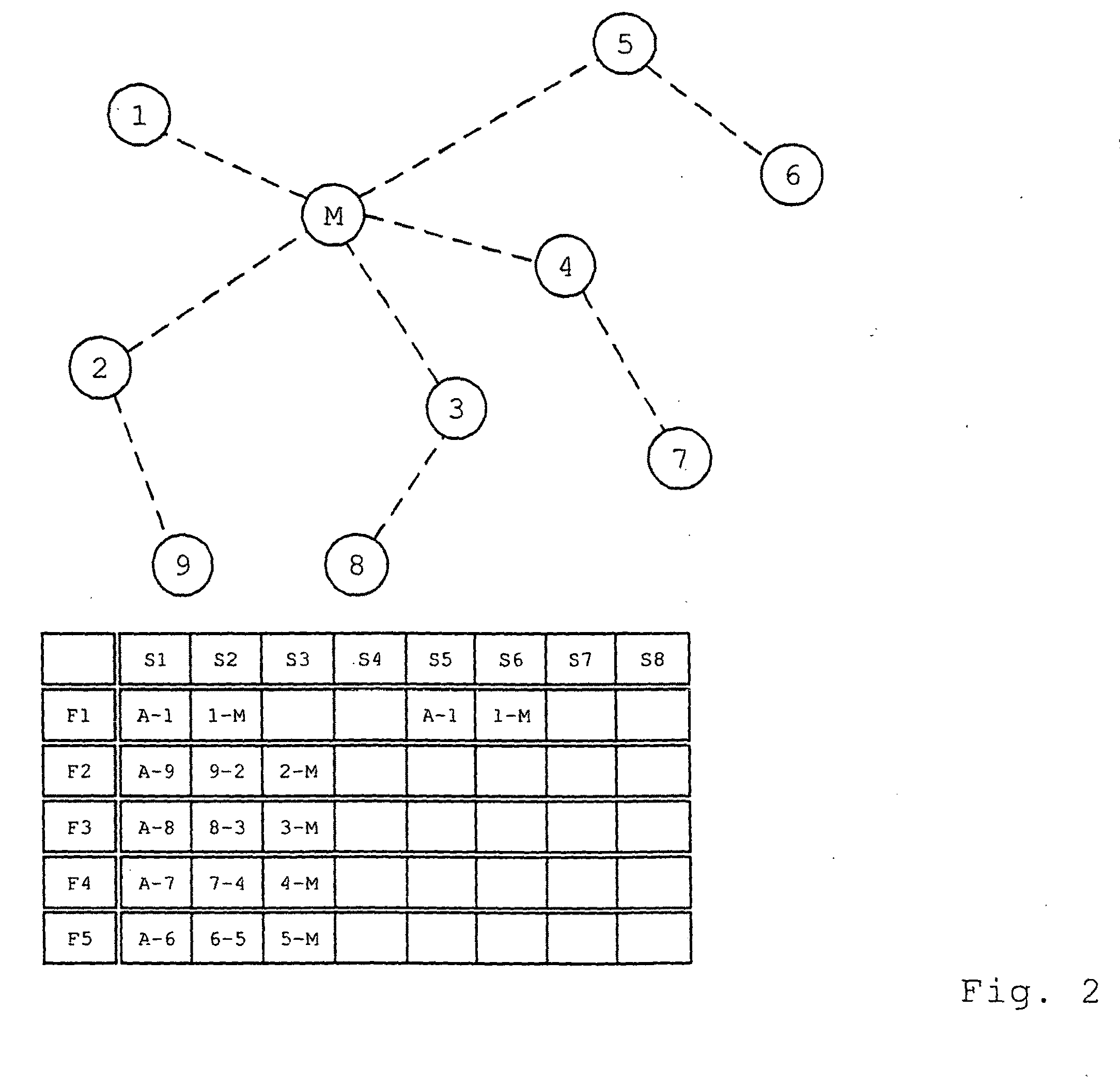Method for optimizing network structures in radio networks
a radio network and network structure technology, applied in the field of radio network structure optimization, can solve the problems of only having very restricted possibilities of having an effect on the communication sequence, unable to adapt to the needs of users, so as to facilitate the connection or re-connection to the network
- Summary
- Abstract
- Description
- Claims
- Application Information
AI Technical Summary
Benefits of technology
Problems solved by technology
Method used
Image
Examples
Embodiment Construction
[0030]FIG. 1 shows a radio network consisting of a master M and a number of slave nodes 1-9, the latter of which are partly disposed as bridge nodes 2, 3, 4, 5, and partly as end-position nodes 1, 6, 7, 8, and 9. This differentiation relates only to the current position in the network. End-position nodes and bridge nodes are otherwise completely equivalent. The nodes 1 to 5 are directly connected with the master M. Also, FIG. 1 shows a superframe that demonstrates a number of time slots S1 to S8, which in turn are available on a number of frequency channels F1 to F5. Within the radio network, the master M will assign a time slot S1 to S8 and a frequency channel F1 to F5 to the slave nodes 1-9 for every communication step. Within this time slot S1 to S8, the slave nodes 1-9 can communicate with one another or with the master M, or can broadcast logon prompts A to log other nodes on to the network.
[0031]Within the scope of the communication that takes place between the nodes 1-9 and t...
PUM
 Login to View More
Login to View More Abstract
Description
Claims
Application Information
 Login to View More
Login to View More - R&D
- Intellectual Property
- Life Sciences
- Materials
- Tech Scout
- Unparalleled Data Quality
- Higher Quality Content
- 60% Fewer Hallucinations
Browse by: Latest US Patents, China's latest patents, Technical Efficacy Thesaurus, Application Domain, Technology Topic, Popular Technical Reports.
© 2025 PatSnap. All rights reserved.Legal|Privacy policy|Modern Slavery Act Transparency Statement|Sitemap|About US| Contact US: help@patsnap.com



